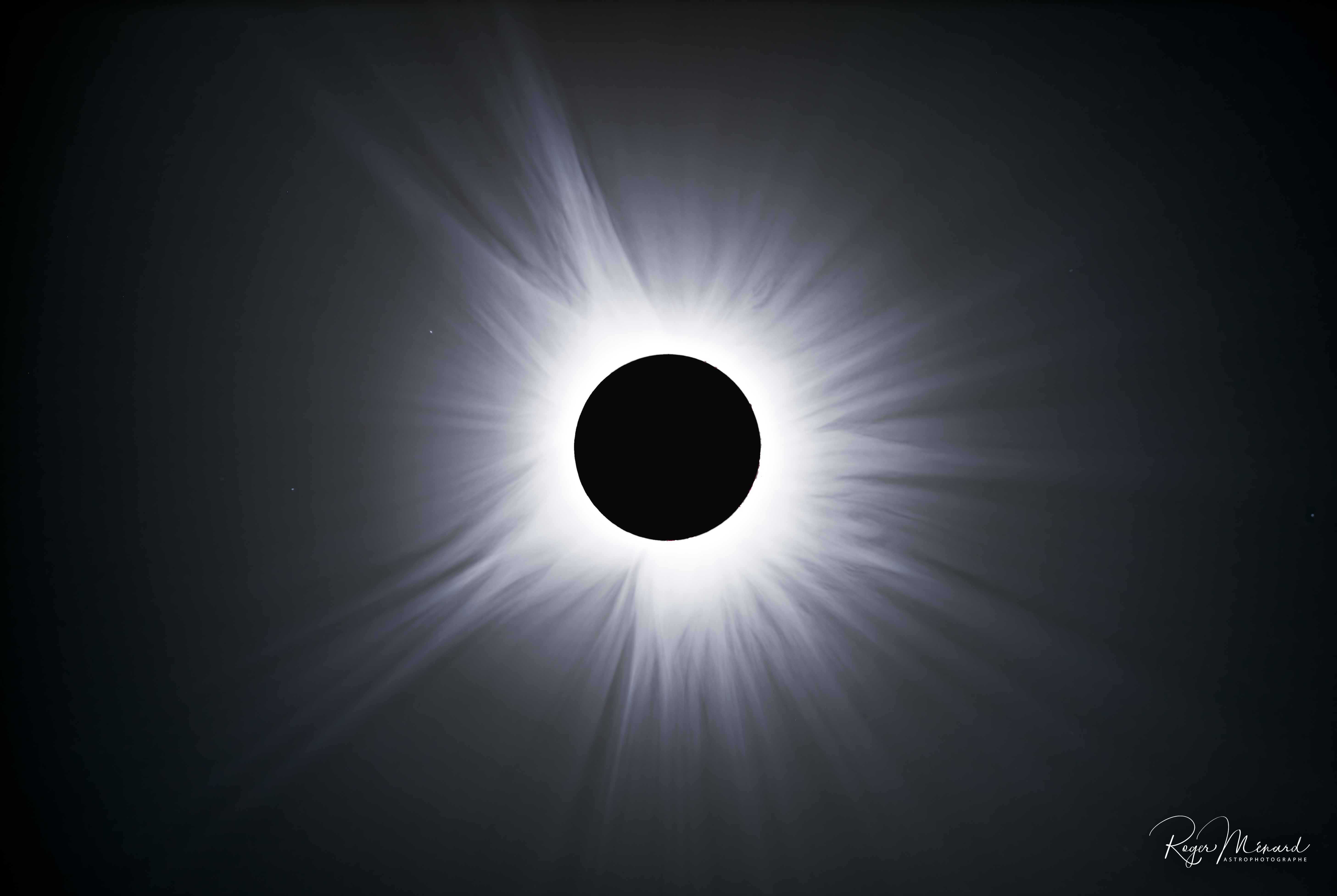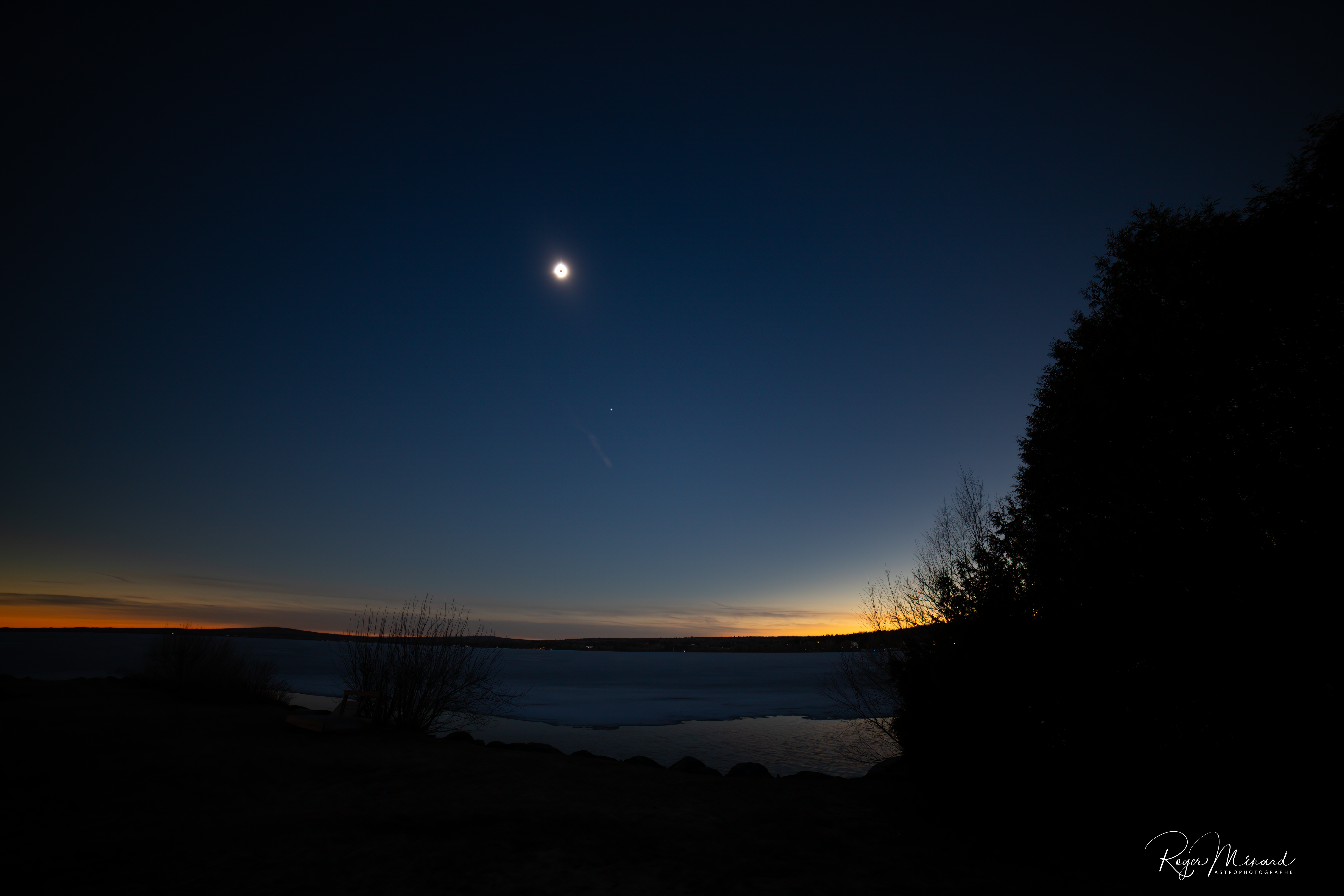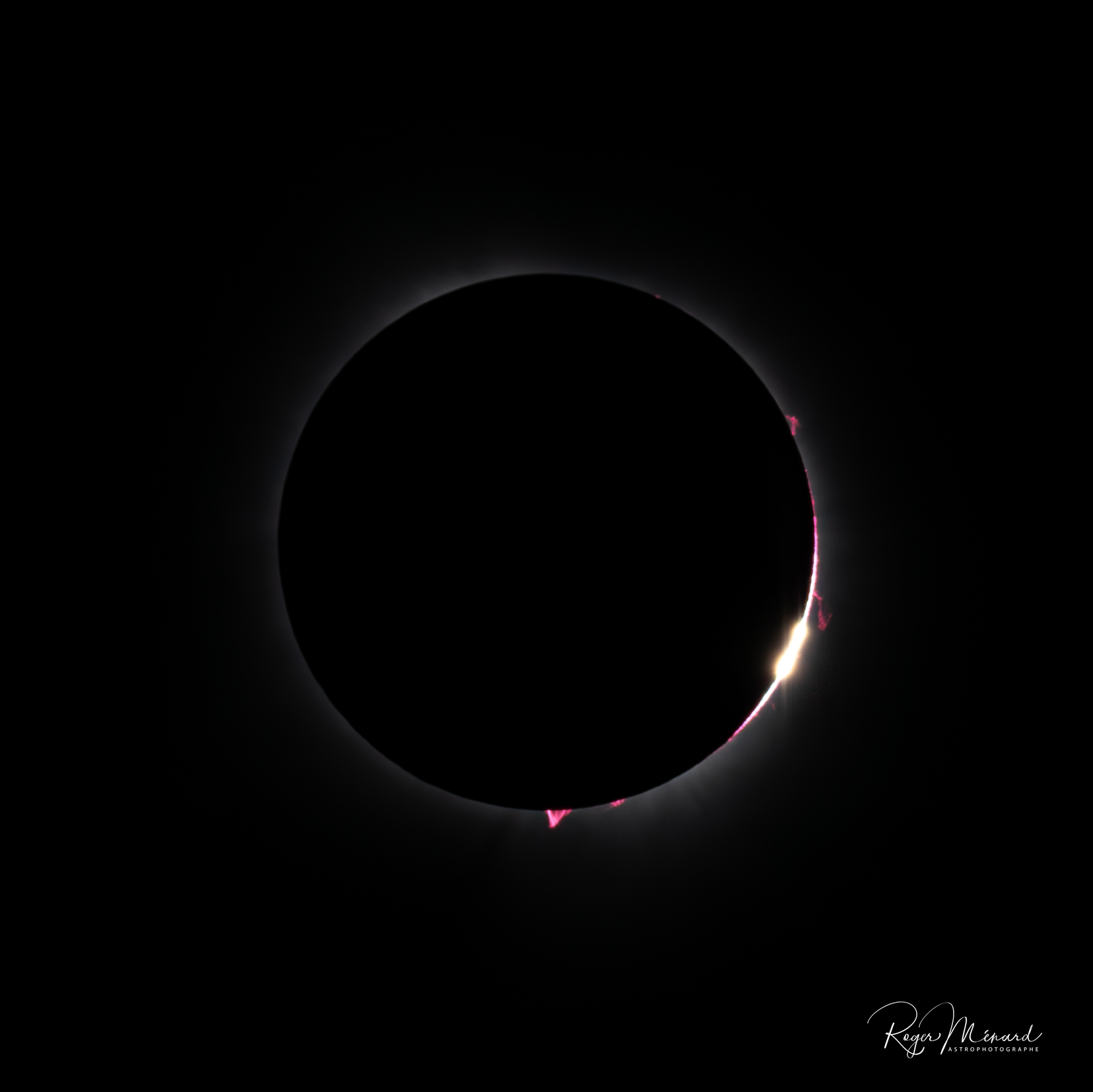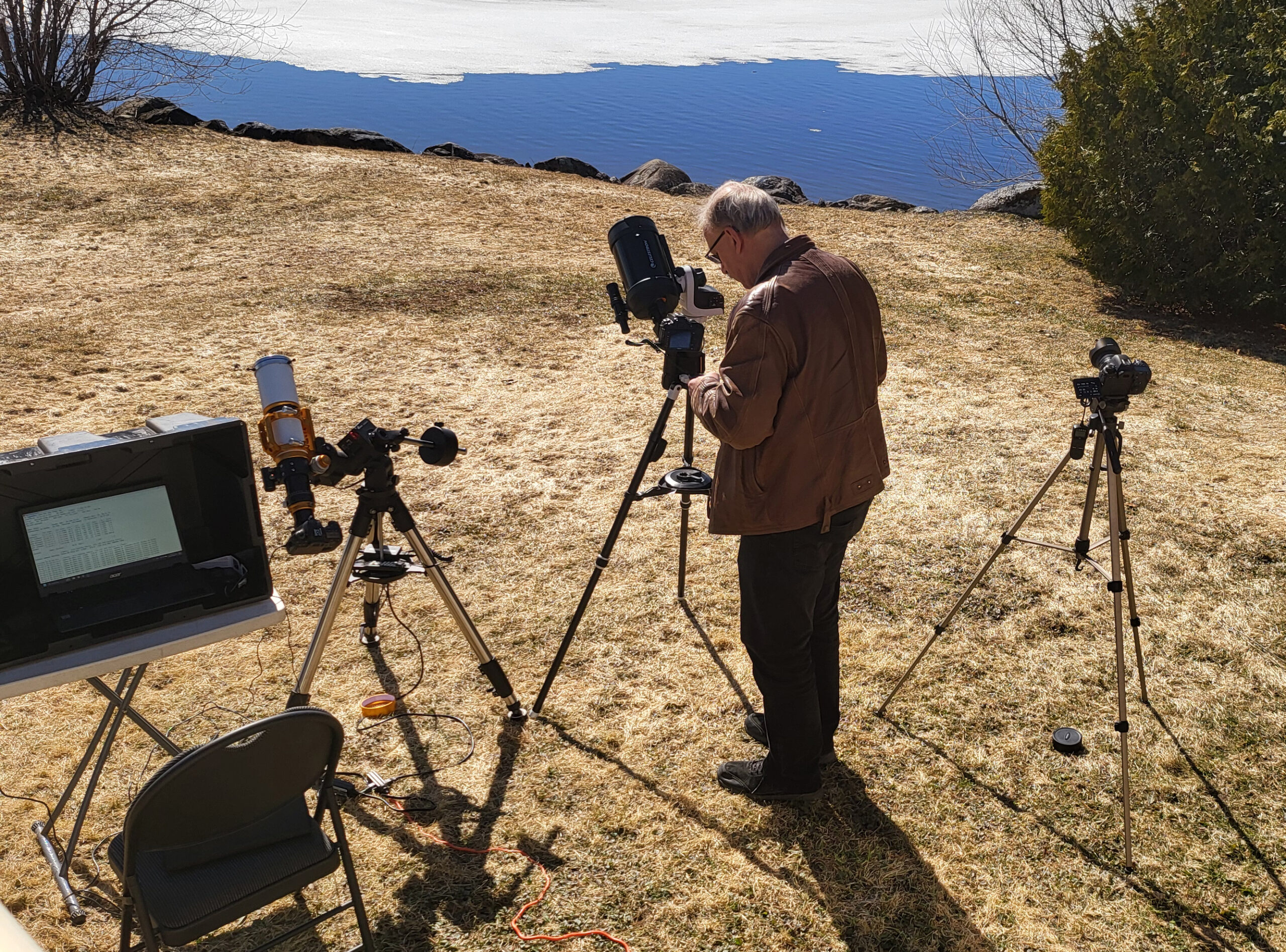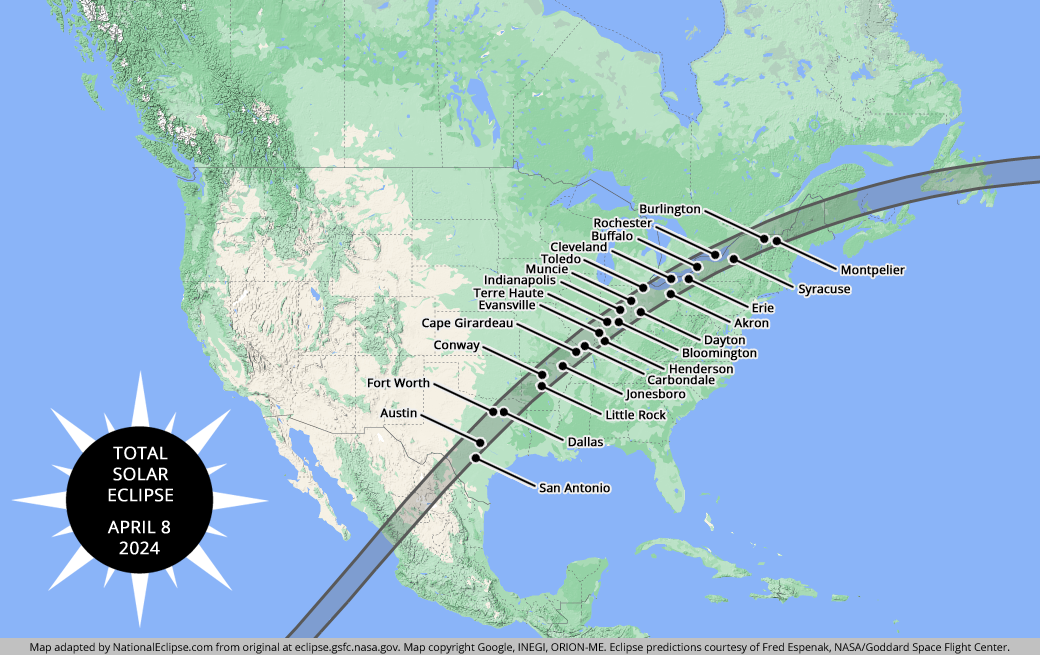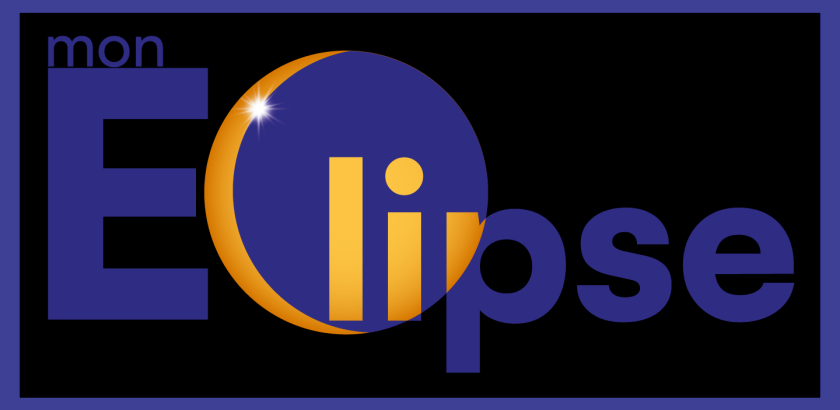
My photos of the eclipse
What a show!
The magical moments spent in the shadow of the Moon on April 8, 2024 will remain forever engraved in our memory. Photos don’t do justice to this multi-sensory experience, but for those who have experienced it, they can serve to bring back lasting memories.
Choosing the right spot for observation
- Average cloud amount
- Duration of totality
- Accessibility and flexibility in case of a sudden change
- Unobstructed horizon
Average cloudiness along the eclipse path →

Summary of phenomenae to observe during a total eclipse of the sun
- Progression of the eclipse seen in the ground shadow of tree leaves
- Very crisp shadow edges for all objects
- Eerie and surreal ambient lighting
- Changes in surrounding nature and animal behavior (well, humans too!)
- Subtle shadow bands on the ground just before and after totality (atmospheric turbulence)
- Arrival of shadow in the plain at a distance
- The “diamond ring” (15 sec. before C2 and 15 sec. after C3)
- Pink solar prominences (7 sec. to 10 sec. after C2 and 7 sec. to 10 sec. before C3)
- The solar corona: shape, structure and luminosity (Between C2 and C3)
- Stars, planets and ashen light on the dark side of the moon (Between C2 and C3)
- The 360-degree sunset illumination throughout the event
- Baily’s beads (8 sec. to 2 sec. before C2 and 2 sec. to 8 sec. after C3)

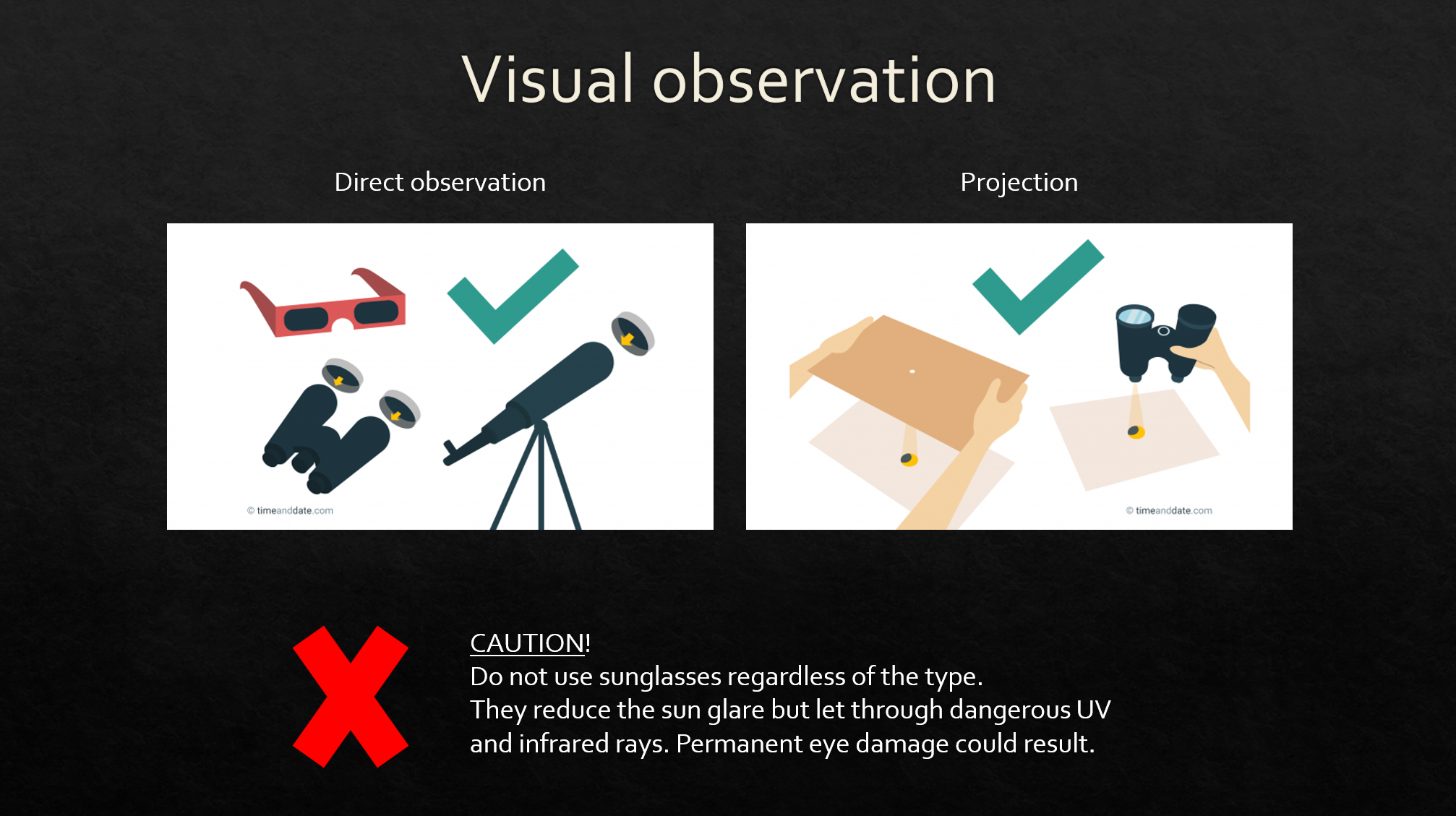
When to use solar eclipse glasses and solar filters
- During all partial phases and, of course, before and after the event!
- Except during the total phase (C2 to C3). During totality, you must remove filters and eclipse glasses in order to view all the phenomenae previously described.
- You can remove them a few seconds before the beginning of totality (C2) to observe the diamond ring and Baily’s beads.
- You put them back on right after the end of totality (C3).
- Use a cell phone app or preset alarm to warn you about the contact times.
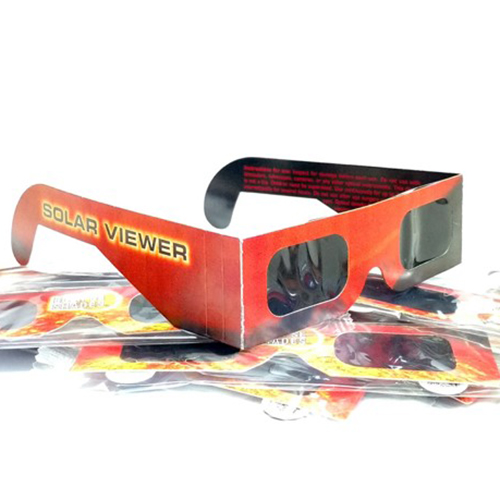
Solar eclipse glasses
Solar eclipse glasses are usually given away by organizers of eclipse watching events. They can also be purchased at specialized merchants, in store or online, for approximately $3 to $5.
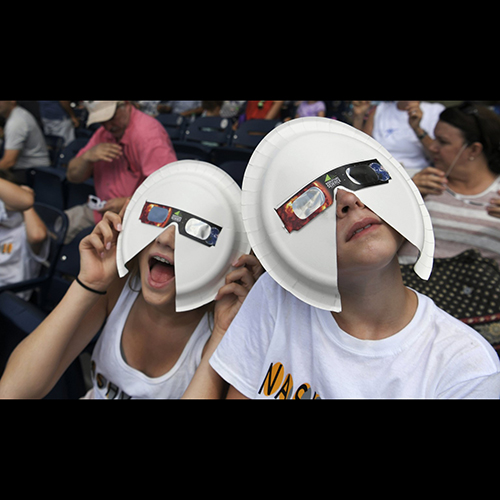
Original and efficient!
A very clever way to ensure great eye protection and a lot of fun for kids. You only have to make two properly positioned cuts in a cardboard plate to insert the branches of the eclipse glassses then cut out a triangle for the nose and mouth.
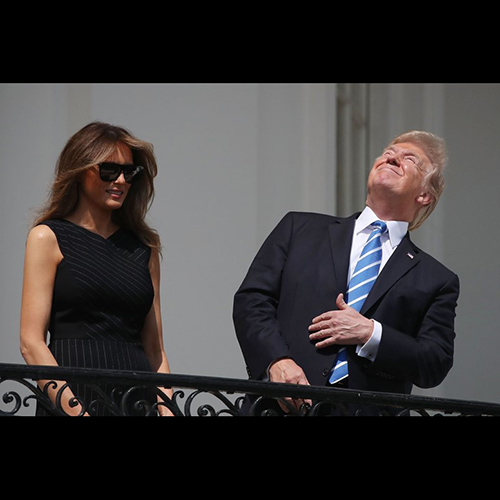
The bad example!
No, these are not “fake news”, this picture was taken during the total eclipse of August 21, 2017.
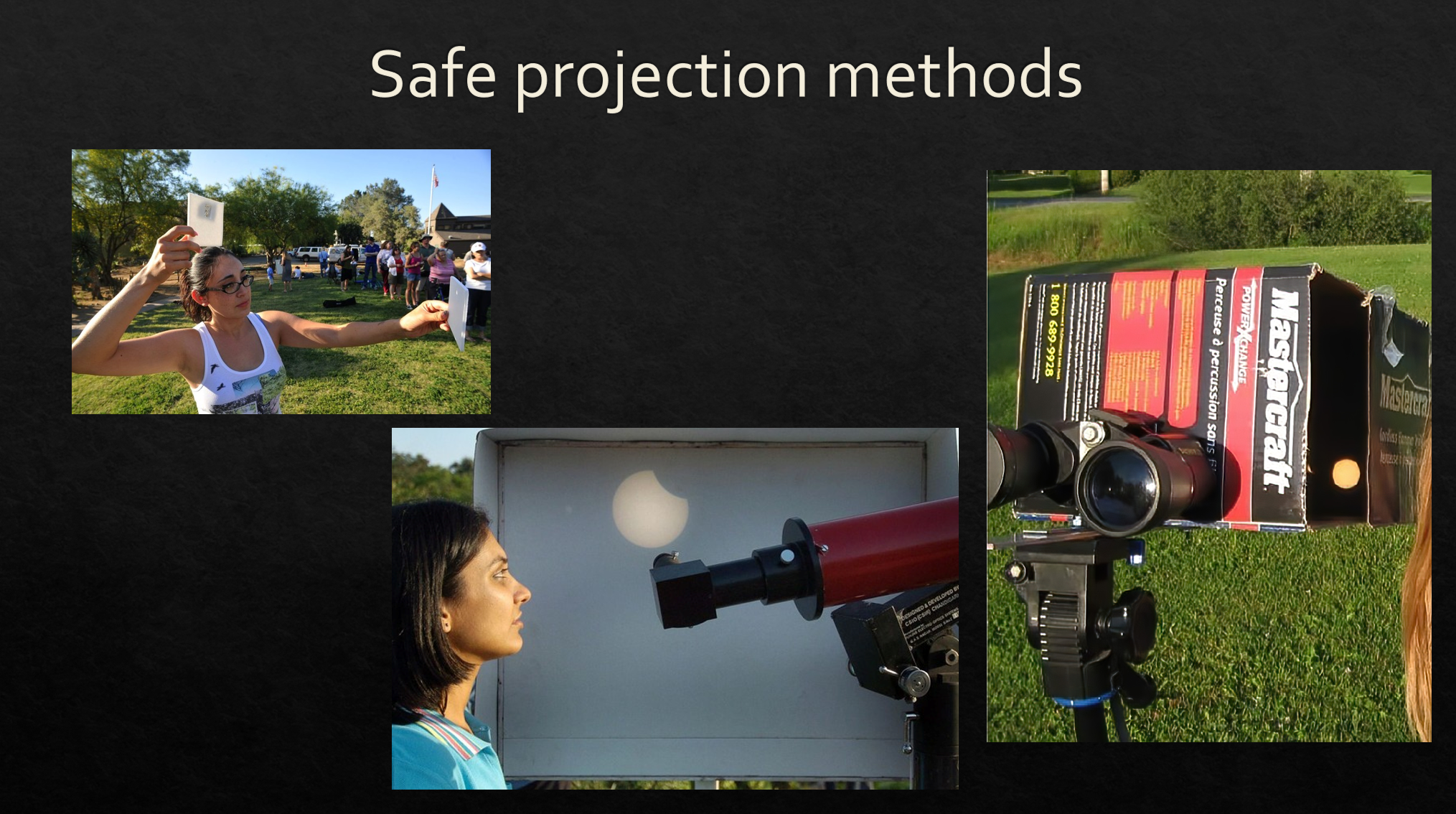
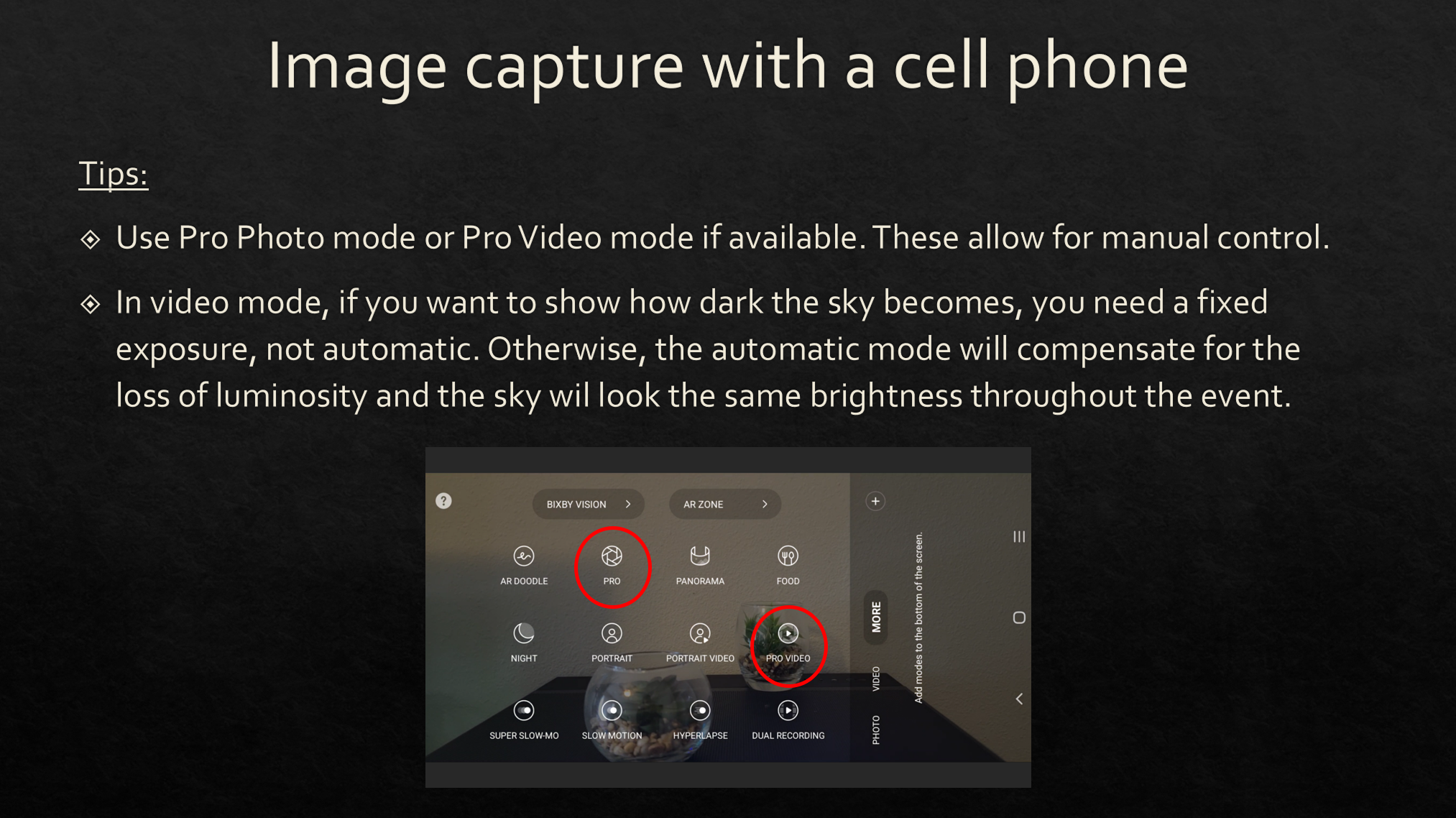
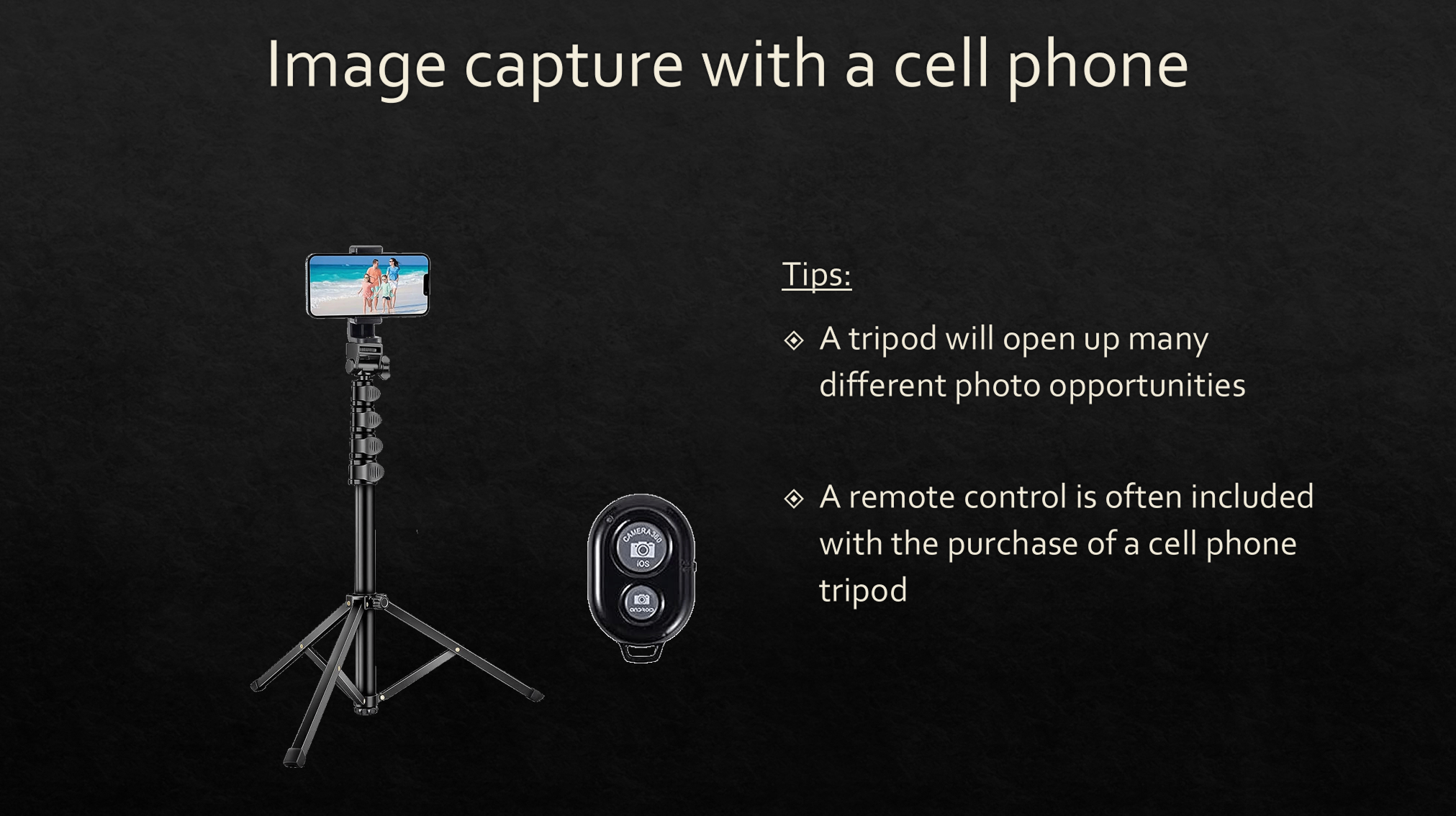
Etiquette and respect during an eclipse when viewing with a group

A topic rarely discussed but of the utmost importance for the benefit of all
- These precious minutes of totality coud be the only opportunity in your lifetime or for those around you. Do not ruin them and hope that others around you do not ruin yours!
- Do not move with all your gear at the last minute for a better spot. You could ruin somebody else’s photo composition or, worse, displace an equipment tripod. Do not move during totality unless you are alone.
- No music please.
- Do not expect help from people around you. Everybody is busy with their own stuff. If in technical trouble, give up and enjoy the visual show.
- No drones.
- No firecrackers, fireworks or horns.
- No pets. They may be generally calm but could become stressed out by the event. Leave them at home.
- No flash please! Turning off the flash is not always easy. Test it in the dark to see what lights will go on when using your camera in a dark setting.
- Also turn off your device then turn it back on and try again in case some settings go back to some default values when the device is turned off
- Also check the focus-assist lamp in the front used by many cameras in autofocus mode
- As an ultimate solution, you may want to use electrician tape to mask off the undesired lights

